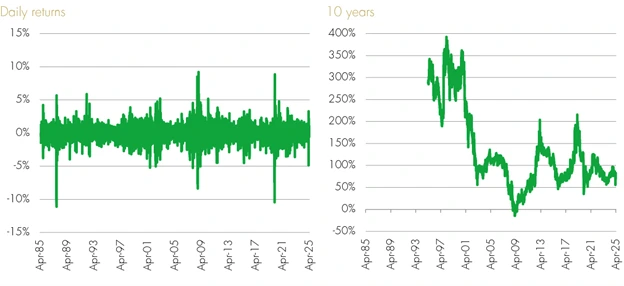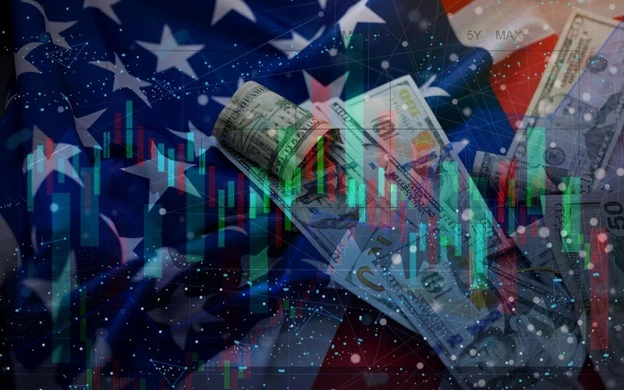Using Politician Investment Data to Predict Options Market Sentiment
By: Sensa Team
Posted: Jul-15-2025
Using data on politicians’ investments to guess how the options market would feel Traders are always looking for fresh and dependable indicators to improve their tactics in today’s ever-changing financial world. The investment behavior of U.S. politicians is a new but underused source of data. These financial disclosures provide us a good idea of how the market could feel about things, from buying large-cap stocks to allocating money to specific sectors. Tracking politicians’ trades can give you predicted clues that go beyond typical financial or legislative analysis when you use good option trading tactics.
This article looks at how data on politicians’ investments might affect the options market and how traders can use this unique dataset to build trading methods that are based on sentiment.
Why trades by politicians are important in financial markets
Politicians work at the crossroads of policy and profit, unlike retail investors. Their jobs typically give them early access to changes in regulations, stimulus packages, or transformations in certain sectors. The STOCK Act says that members of Congress must report trades within 45 days, yet trends often show up even when reporting is late.
Understand the sentiment Behind Political Trades
Historical examples, like buying defense stocks before military budget announcements or making strategic buys before big changes in the economy, show that these trades don’t happen by chance very often. Politician investment trackers are quite useful for both institutional and ordinary investors.
Some important situations are:
- Before the rules went into effect, buying tech stocks may have shown that insiders were confident.
- Sector rotation: Moving from renewable energy to oil may be a sign of political conflicts or changes in funding.
- Timing the options market: A lot of call or put activity that happens at the same time as political news can show how the market feels about the direction it’s going.
- Traders might take a proactive approach to the market instead of a reactive one by combining this information with other market indications.

How the Political Trading Data Option Affects Strategies
Traders in the options market often look at things like volatility, open interest, and unusual order flow to help them make decisions. Politician trading data adds another level of proof for these kinds of indicators, especially in models based on mood.
Use Political Trade Data For Long Conversations And Quick Strategies
If a lot of powerful politicians suddenly put money into a certain stock or sector, it could mean that good laws or government contracts are on the way. For instance, investing in the defense sector before a defense budget release can help a bullish options strategy.
Traders can think about:
- Purchasing call options that will expire in one to two months
- Choosing strike prices that are close to resistance levels
- Confirming entries with data on volume trends and option flow
- Making a Sentiment-Based Options Trading Plan Based on Political Disclosures
Traders should establish an organized, disciplined plan on how to use political trading data. This is how:
Step 1: Find the most important political investors
Focus on:- Members of committees that deal with finance, energy, technology, or defense.
- Lawmakers who work on proposals that could affect certain industries
- Politicians who have a history of making good transactions on a regular basis
Use politician investment trackers and public financial disclosure databases to find trade patterns that are useful.
Step 2: Keep an eye on the timing and volume
Important things to keep in mind:- Groups of trades in certain areas
- Timing of disclosures to match surges in options volume
- Several politicians have the same trade patterns over and over.
- Time-based correlations frequently show where to put your strategy.
Step 3: Use Option Flow and Unusual Activity Together Cross-check political trade data with real-time technologies that keep an eye on:
- Flow of institutional orders
- Things that happen in dark pools
- Analysis of live options chains
A political trade that goes along with unusual call volume or directional movement makes the trade setting more likely to work.
Step 4: Use Risk Management
When signals are in sync:- If you think the market will go up, use long calls or debit spreads.
- Use bear spreads or neutral techniques, like iron condors, when you’re not sure what will happen.
- Use covered calls or cash-secured puts to hedge your bets as needed.
- Always use defined-risk strategies; politician transactions are signals, not promises.
Final Thoughts
No one piece of information can ensure success in trading. Tracking politicians’ trades, on the other hand, gives us a clear picture of how policy affects profit. When used carefully with option trading tactics, this information can be a strong indicator of market sentiment.
As individual and institutional traders try to get an edge in markets that are getting more and more competitive, data on politicians’ investments could become a key part of advanced, sentiment-driven options strategies.